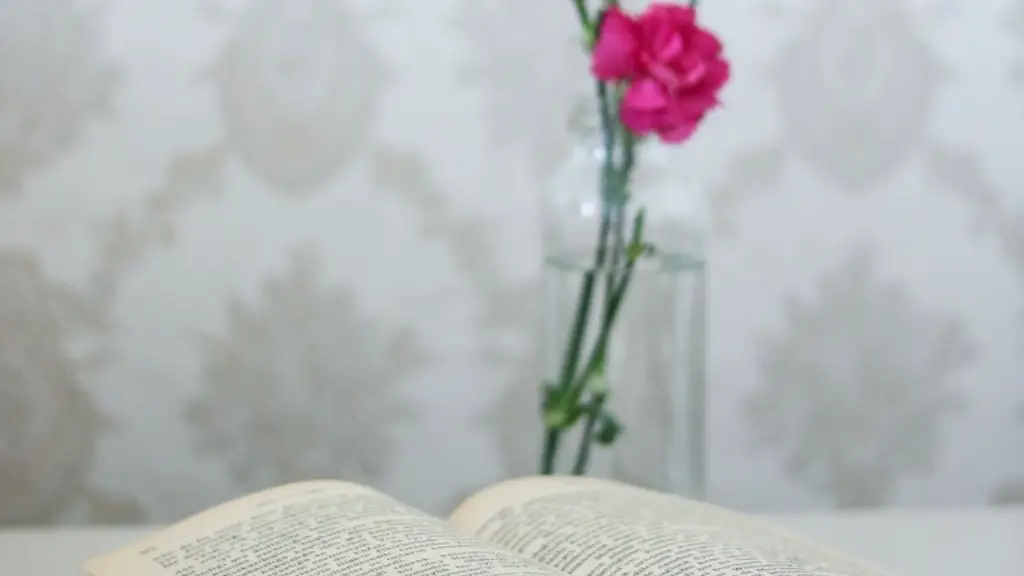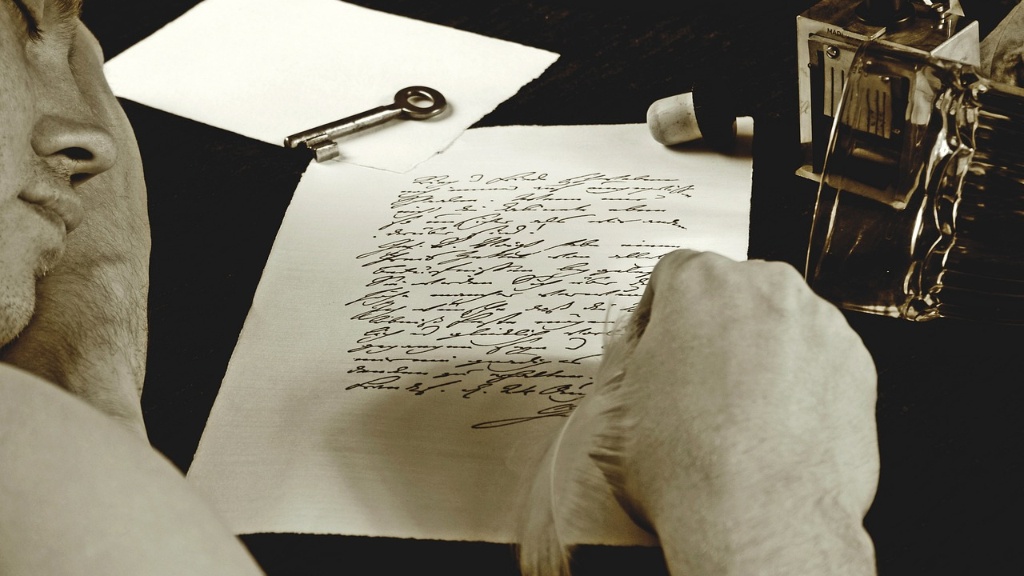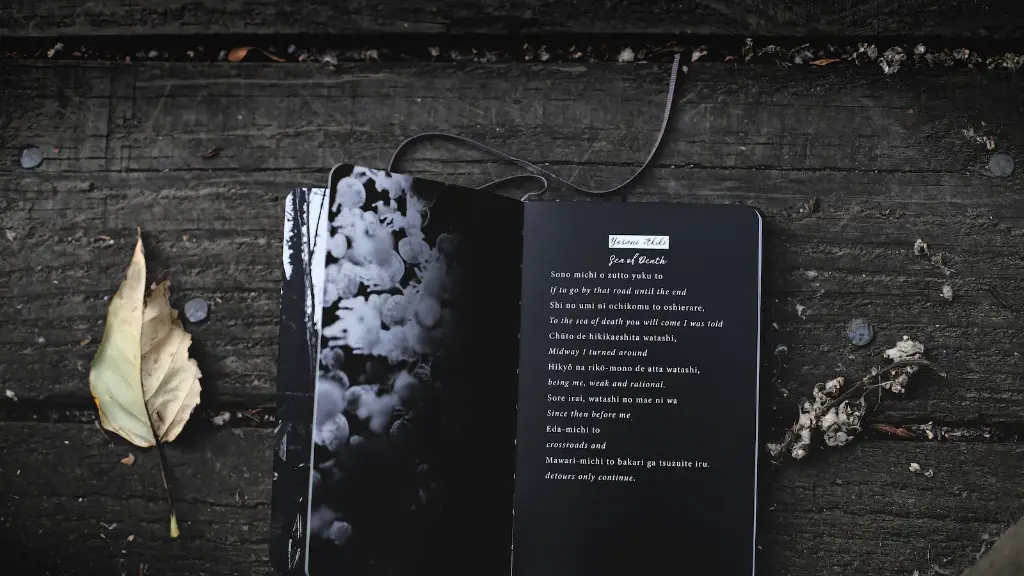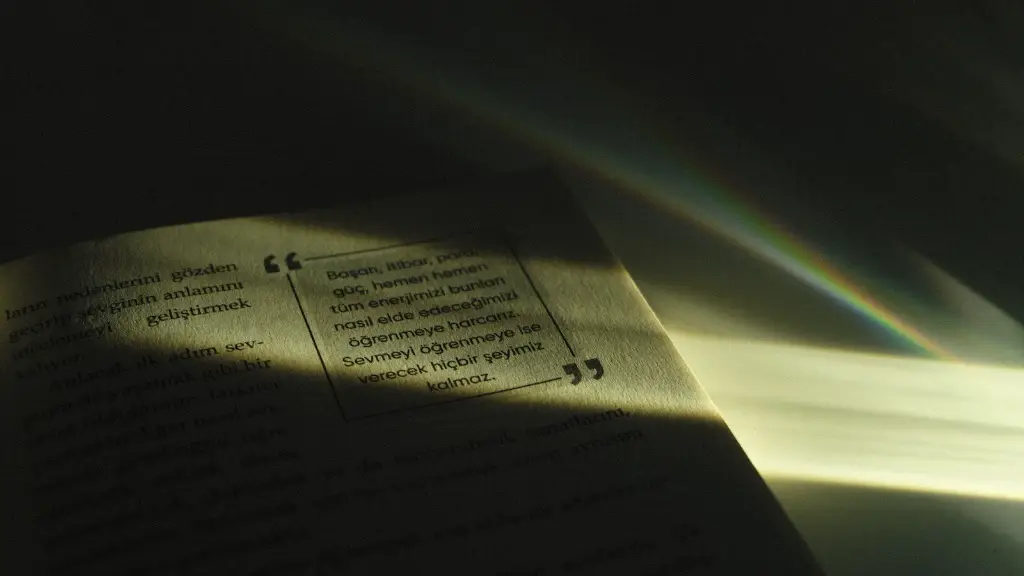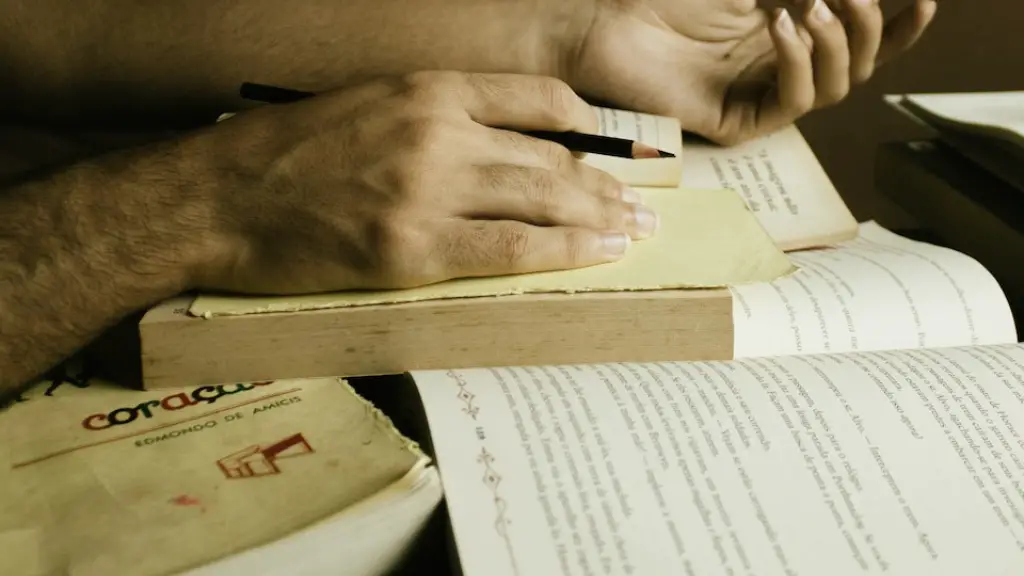What is Color Poetry?
Color poetry is a form of expression, which uses colors to create beautiful imagery and evoke emotion. Colorful words and phrases, often found in literature and songwriting, are used to portray a particular mood or feeling. It may be used as part of a poem or as a stand-alone piece. Colorful language is often spoken and read out loud, as it is especially powerful when heard.
Color poetry was first used in ancient cultures to evoke emotional resonance in storytelling and dramas. In Ancient Greece, it was used to describe emotions and create vivid imagery. In the 19th century, poets such as Edgar Allen Poe, Walt Whitman, and William Wordsworth used colorful language to evoke rich emotional landscapes in their poems.
The most important technique of color poetry is the use of figurative language to express emotions. Metaphors, similes, and other tropes are all used to create powerful images of emotion. Colors are often used as symbols to represent intense or complex feelings. For example, blue can symbolize sadness or loneliness while yellow can symbolize joy or happiness.
Each color has its own unique emotional connotation and importance in color poetry. Red symbolizes passion, anger and intensity;orange symbolizes energy and creativity;yellow symbolizes happiness and optimism; green symbolizes growth and prosperity; blue symbolizes depression and sadness; purple symbolizes mystery and spirituality; and white symbolizes innocence and purity. Different combinations of colors can be used to create unique and powerful visual images.
The beauty of color poetry lies in its ability to evoke strong emotions and tell a story through color. It allows poets to use a creative and unexpected language to express their feelings and emotions. Because of its visual expression, color poetry can be a very powerful tool for expressing ideas and feelings.
Poetic Structure and Form
When it comes to color poetry, poets have the freedom to use any structure they choose. There are no set rules as to how it should be formed. A poet can decide to use a traditional rhyming scheme or an irregular structure, depending on their preference. Some poets prefer to create a narrative in their color poems, whereas others may focus on imagery and emotion.
The length of a color poem can vary, with some poems being just a few lines and others lasting several pages. It all depends on the poem and what the poet is trying to express. No matter the size, a poem should always strive to evoke emotions and tell a story. Furthermore, a color poem can be recited, performed or written out and read.
A color poem may include vivid visuals, sensory imagery, and metaphors in order to create an immersive experience for the audience. Different colors are used in combination to create a strong and evocative image. This makes it easier for the audience to imagine and sympathize with the mood and feeling of the poem. Each color has its own unique symbolism and meaning, and the poet should be aware of this when crafting a poem.
Color poetry can be used in many different ways and should be seen as an opportunity for exploration, creativity and storytelling. It allows artists the freedom to express their emotions and personalities through the use of vibrant visuals and descriptive language. The possibilities are endless, and the poet can create a unique, powerful piece with color poetry.
Transforming Text with Color
A poem can be transformed by adding color to the text. Letters, words and phrases can be colored to create an impact or draw attention to specific points in the poem. This can be done manually or using digital software. Adding color to a poem can help bring it to life and make it more vivid and memorable. It can also be used to emphasize themes and central ideas. Several studies have shown that color adds depth to text and can make it easier to remember.
Colored text allows the poet the opportunity to use different patterns and shapes to create a unique piece of art. Blocks of color can be used to create an image in the text and help the reader to comprehend the poem better. The poet can also choose to use contrasting colors for emphasis. This can help draw the reader’s attention to certain aspects of the poem and make it easier to understand.
Adding color to a poem has the potential to make it more visually appealing, and it can also help the reader to understand the poem on a deeper level. By using patterns, shapes and contrast, the poet can create an image within the poem and make it more memorable. Color is a powerful tool, and when used wisely it can enhance a poem and make it truly memorable.
Tips for Writing Color Poetry
Writing color poetry can be a challenging and rewarding activity. It’s important to remember that there are no rules to creating a poem and the poet should be open to exploring the possibilities. Here are some tips to help poets create powerful and meaningful color poems:
- Choose words and phrases that evoke strong emotions
- Choose colors that represent the emotions and themes of the poem
- Experiment with different structures and forms
- Explore different writing techniques to create unique visuals
- Use sound and rhythm to create an immersive experience
- Read aloud to get a better understanding of the poem
Writing color poetry can be a fun and rewarding endeavor. It allows poets to create immersive visuals and evoke emotion through language. By taking the time to explore the possibilities and experiment with different techniques, poets can create powerful and meaningful pieces of art.
The Limitations and Benefits of Color Poetry
Despite the potential of color poetry, there are also some limitations to consider. For example, using color in a poem can be distracting and overpowering. A well-crafted poem should have a balance between the words and the visuals so that the reader is able to focus on the meaning of the piece. If there is too much color, the words may become less important and the reader may lose track of the story.
Additionally, there are certain colors which may be interpreted differently by different people. For example, what one person may deem as joyful or uplifting may be seen as depressing or sorrowful to another. When choosing colors for a poem, it’s important to consider the cultural and personal contexts to ensure that the poem is interpreted correctly.
Despite the limitations, color poetry is a powerful tool for expression and storytelling. It can be used to express emotion and create powerful visuals. Color can add vibrancy and life to a poem, and when used wisely it can create an immersive experience for the reader.
Examples of Color Poetry
There are many different examples of color poetry which can offer inspiration and insight. Examples range from ancient poems to contemporary works. Here are just a few examples of color poetry to explore:
- Alfred Lord Tennyson’s “The Lady of Shallott”
- Theodore Roethke’s “My Papa’s Waltz”
- William Wordsworth’s “The World Is Too Much with Us”
- Robert Frost’s “Nothing Gold Can Stay”
- Rumi’s “Love is the Moral Light of Creation”
- Simon Armitage’s “The Stripping of the Altars”
There are many more examples to explore, and each one offers something unique. By exploring different color poems, poets can gain insight into different structures, themes and techniques which can be used to create unique and powerful pieces of art.
Techniques for Using Color
When it comes to writing color poetry, there are many techniques that can be used to create a unique piece of art. Here are a few techniques to consider:
- Use vivid visuals to create an immersive experience
- Experiment with different angles and perspectives
- Combine emotions with different colors to create symbolism
- Choose colors that contrast to emphasize certain points in the poem
- Use contrasting colors to show different aspects of the same emotion
- Create patterns and shapes to evoke emotion and create an image
These are just a few techniques that can be used when writing color poetry. The possibilities are endless, and the poet can use these techniques to create an immersive, powerful piece.
Conclusion
Color poetry is a powerful tool for expression, storytelling and creativity. It allows poets the freedom to explore different techniques and express emotion through the use of vivid visuals and descriptive language. By taking the time to explore the possibilities and experiment with different techniques, poets can create unique and powerful pieces of art.
